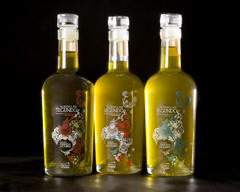
The informal olive oil cruet that sits on most restaurant tables in Spain will soon be replaced by labeled, sealed and non-reusable bottles under stricter oil bottling rules, which took effect last week.
While improved hygiene is one objective of the new rules, The New York Times reports the ultimate goal of the world’s largest olive oil producer is to build stronger recognition for its brands and accelerate exports to markets such as the United States, where Italian olive oil reigns.
Spain acted independently after several non-olive-oil-producing European nations put the kibosh on stronger bottling and label legislation across the 28-nation European Union, claiming it would create more waste and added costs, especially for restaurants that typically refill their table cruets from 5-liter plastic containers, according to the report.
The Spanish government sided with oil producers, agreeing that stricter rules would guarantee the authenticity of its olive oils and help consumers better identify the quality and origin of their oil.
“Traceability is important for food security, but we must also make people much more aware that olive oil is not something banal, but instead noble and very special,” Álvaro Olavarría, the managing director of olive oil company Oleoestepa, told The New York Times.
“Spain is the world’s No. 1 producer, but doesn’t have the consumer culture that such a ranking deserves,” said Jesús Santos, who owns a handful of restaurants in Madrid and Bilbao, serving mainly Basque cuisine.
The European Union produces three-quarters of the world’s olive oil, with Spain expected to produce 1.5 million tons of the EU’s total 2.3 million tons of olive oil in 2014, according to European Commission estimates. Italy is ranked No. 2 with an estimated 450,000 tons, followed by Greece and Portugal.
Spain has long been frustrated by the fact that Italy exports its high-end extra-virgin olive oil mainly by being the largest importer of Spanish oil, which it buys mostly in bulk, according to The New York Times.
“The rules of the European oil market were tailor-made by and for Italy,” said Olavarría. “The worldwide perception is still that olive oil is far more Italian than Spanish, so it’s been about playing catch-up and trying to get some facts straight.”

